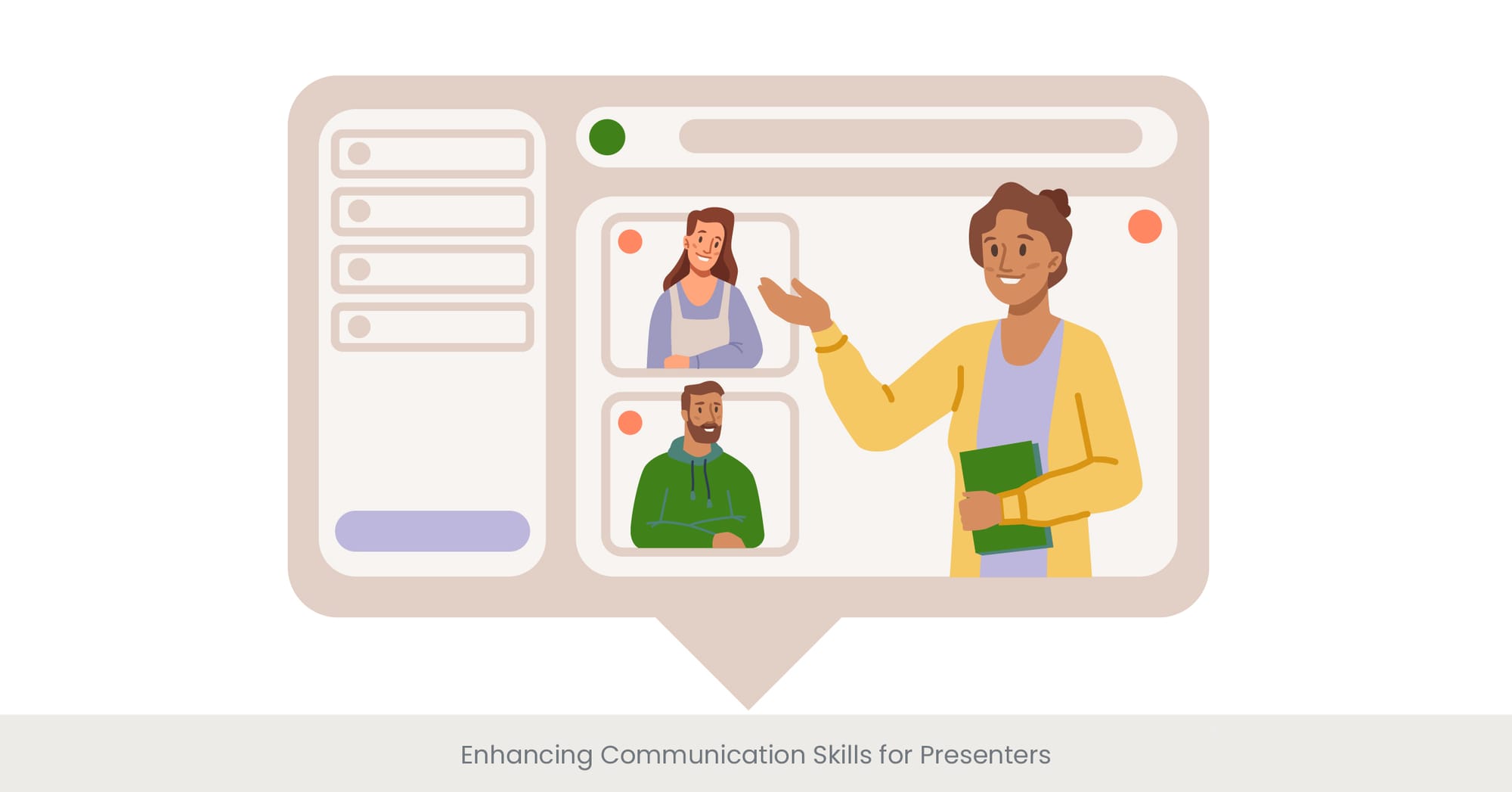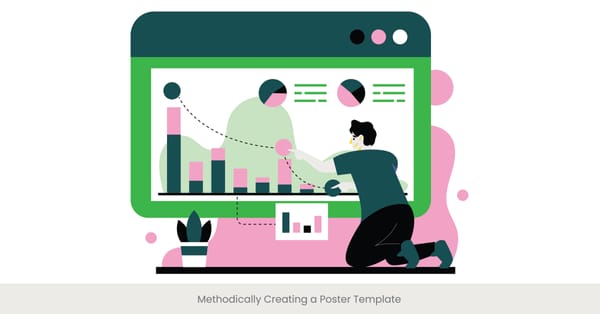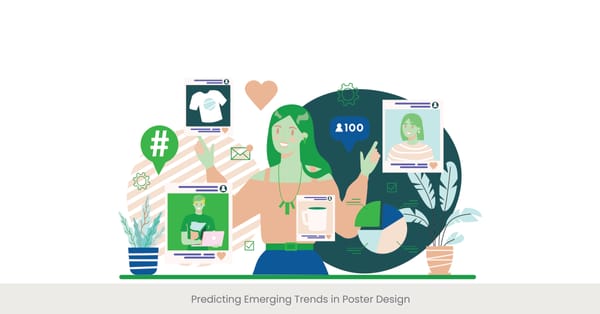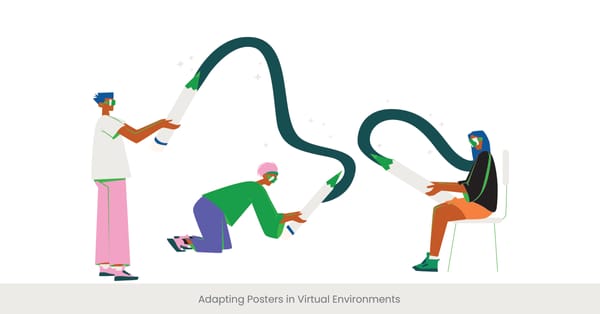
Verbal Presentation Skills for Poster Sessions

Engaging Your Audience Verbally
When engaging in a poster session, the ability to convey your research effectively through spoken words is crucial. A presenter must master the art of verbal communication to not only share information but also spark interest and engage the audience. This involves clear articulation, modulating pitch and tone, and strategically pausing for emphasis, ensuring that the audience grasps the complex scientific concepts presented.
The Art of Speech in Scientific Dissemination
Verbal skills in scientific poster presentations transcend mere articulation of words; they are about connecting with the audience and making the research relatable. Historical examples, like the famed scientific meetings at the Royal Society, show us how scientists used storytelling and precise language to captivate and educate their peers. Today’s presenters can draw from such traditions by adopting a conversational tone, using analogies, and avoiding jargon to make the material accessible. A powerful verbal presentation helps the audience retain key findings and encourages follow-up discussions.
Real-World Applications and Examples
In modern conferences, effective verbal presentations have led to increased engagement and feedback, vital for academic collaboration and growth. For instance, at recent international poster sessions, presenters who skillfully explained their posters often received more attention and follow-up questions, leading to fruitful exchanges. Highlighting how certain phrases and presentation styles drew larger audiences provides practical insights for future presenters. Real-world case studies underscore the importance of verbal engagement in academic poster sessions.
Scholarly Insights and Practical Advice
According to a study published in the "Journal of Scientific Communication," presenters who actively engage their audience with clear, concise explanations and direct eye contact can significantly enhance the effectiveness of their poster sessions. Another source, "Effective Presentation Techniques in Academic Posters," recommends using bullet points to summarize research poster and key findings and posing questions during the presentation to stimulate audience interest. Verbal communication is at the core of delivering academic poster presentations that resonate with audiences.
Non-Verbal Communication: Body Language and Eye Contact

The Silent Language of Success
In the realm of poster presentations, non-verbal cues play an equally significant role as the verbal ones. Effective non-verbal communication involves the use of body language and eye contact to convey confidence and competence. A presenter’s posture, gestures, and facial expressions can profoundly impact how the message is received and interpreted by the audience.
Foundations and Implications of Non-Verbal Communication
Historically, the study of non-verbal communication has shown that it can communicate more about one's intentions and feelings than words alone. Research indicates that body language accounts for more than 50% of the communication during presentations. Presenters can harness this powerful tool by maintaining an open stance, using gestures for emphasis, and making consistent eye contact to engage the audience effectively. Visual communication for posters relies heavily on the combination of both verbal and non-verbal skills.
Illustrating Through Case Studies
Consider a case study from a recent scientific meeting, where a researcher used dynamic gestures and sustained eye contact to draw attention to their own poster below. This approach not only made the session more engaging but also facilitated a deeper connection with the attendees, leading to an extended discussion and more substantial feedback. Such examples serve as practical models for enhancing non-verbal communication skills in academic poster presentations.
Evidence-Based Approaches to Non-Verbal Engagement
A publication in the "Journal of Academic Conferences" highlights that presenters who effectively integrate non-verbal cues with their verbal communication are more likely to captivate their audience and are prepared to deliver memorable presentations. Techniques such as mirroring the audience’s body language, maintaining an appropriate amount of eye contact, and strategically using space around the poster can enhance the presenter own poster's perceived enthusiasm and credibility.
Effective Listening and Responding Techniques

Mastering the Art of Engagement
Effective listening is critical for presenters at poster sessions, where interaction can significantly impact the reception of the content presented. This skill involves more than just hearing questions; it requires active engagement, interpreting the underlying inquiries, and providing thoughtful, clear responses. Presenters at academic poster sessions must be adept at listening to understand, not just to receive feedback and reply, which fosters a more meaningful exchange of ideas.
Historical and Conceptual Background
The concept of active listening in academic settings has evolved over the years. Initially observed in therapeutic and counseling environments, its relevance has expanded into educational and research presentations. Effective listening involves acknowledging the speaker, providing feedback, and following up with questions that deepen the conversation. This approach not only enhances comprehension but also builds a rapport with the audience. Public speaking for posters becomes more effective when combined with excellent listening skills.
Case Studies and Practical Examples
A notable example of effective listening can be found in a case study from a national conference on environmental science. A presenter effectively engaged with complex questions by first summarizing the query to ensure understanding, then providing detailed responses, and finally asking follow-up questions. This technique not only clarified the background information but also demonstrated the presenter's respect and genuine interest in the audience’s viewpoints. Public speaking for posters benefits greatly from a dynamic, two-way conversation with the audience.
Supporting Research and Techniques
Research highlighted in the "International Journal of Presentation Skills" suggests that presenters who employ active listening techniques are more likely to create impactful connections and promote an environment conducive to learning and discussion. Techniques such as nodding, maintaining eye contact, and repeating questions before answering are recommended to enhance the effectiveness of the presenter’s responses. Integrating these skills into public speaking for posters makes the session more engaging and memorable.
Managing Nervousness and Speaker Anxiety
Understanding and Overcoming Presentation Jitters
For many presenters, especially during poster sessions at scientific meetings, nervousness and anxiety can be significant barriers to effective communication. Understanding the root causes of these feelings—such as fear of public judgment or a lack of confidence in one's knowledge—can help presenters develop strategies to manage and mitigate these emotions. Overcoming nervousness is key to delivering a successful academic poster presentation.
The Science Behind Speaker Anxiety
Research into the psychology of performance anxiety reveals that this phenomenon is not only common but can be constructively addressed. Techniques from cognitive behavioral therapy suggest that by reframing negative thoughts and focusing on positive outcomes, speakers can reduce their anxiety levels. Historical approaches, such as the Alexander Technique, have also been used to improve posture and breathing, which can directly impact a presenter's confidence and calmness. Public speaking for posters becomes far less daunting once anxiety is managed effectively.
Real-World Examples and Success Stories
A case study involving graduate students presenting their research posters showed that those who practiced their presentations in a simulated environment experienced reduced anxiety when presenting at actual conferences. Furthermore, presenters who engaged in mindfulness exercises prior to their sessions reported feeling more present and connected with their audience, leading to more effective communication and less perceived stress. Real-world success stories highlight how practicing academic poster presentation techniques can reduce anxiety.
Reference Studies and Proven Strategies
According to a study published in "The Journal of Effective Speaking," strategies such as deep breathing exercises, visualization of a successful presentation, and engaging in small, focused discussions before the main event can significantly help in managing speaker anxiety. These practices have been endorsed by seasoned presenters and are taught in many communication skills workshops designed for scientists and researchers. Implementing such strategies can make public speaking for posters more effective and enjoyable.
Storytelling Techniques for Presenters

Crafting a Narrative Around Your Research
Effective storytelling is a powerful tool for presenters, particularly in the context of scientific poster presentations. It allows complex information to be conveyed in a more digestible and engaging manner. By structuring their scientific poster presentations more as a story, presenters can lead their audience through a journey that highlights the significance and impact of their research.
Historical Perspectives on Storytelling in Science
The tradition of storytelling in science can be traced back to the great natural philosophers who used stories to explain their discoveries to the public. This method has evolved but remains essential for making intricate scientific data accessible and memorable. Techniques include setting the stage with a compelling introduction, using clear milestones to mark progress in the research, and concluding with a strong, impactful message.
Modern Applications and Case Studies
An example of effective storytelling was seen at a recent international scientific conference, where a researcher used the story of their decade-long research project to engage the audience. This narrative approach not only highlighted the chronological development of their work but also showcased the setbacks and breakthroughs, making the presentation more relatable and inspiring.
Scholarly Advice and Practical Tips
Literature on effective communication suggests that stories which incorporate personal experiences, real-world applications, and emotional elements are more likely to resonate with an audience. A guide published in "Science Communication Techniques" recommends using visuals and metaphors to support the narrative, making complex concepts more understandable and retaining the audience's interest throughout the session.
Looking to elevate your presentation design?
Engaging Your Audience with Questions

Interactive Dynamics in Poster Presentations
Asking questions during a poster presentation is not just about filling time; it's a strategic approach to involve the audience actively and make the session more interactive. This technique allows the presenter to gauge the audience's understanding, solicit their opinions, answer them and stimulate deeper thinking about the subject matter.
The Role of Inquiry in Learning
Historically, the Socratic method emphasizes the use of questions to foster learning and critical thinking. In the context of scientific research poster presentations, this approach helps to create a dialogue between the presenter and the audience, making the experience more collaborative and dynamic. By posing thoughtful questions, presenters can encourage attendees to consider the implications of the research and its broader impact.
Examples from Successful Sessions
At a recent environmental science symposium, a presenter effectively used questions to draw the audience into a discussion about climate change impacts. By asking the audience to predict outcomes based on the data presented, the speaker successfully engaged them, leading to a lively and informative exchange. This interaction not only made the session memorable but also emphasized the practical importance of the research.
Expert Recommendations and Techniques
Guidance from communication experts suggests that questions should be open-ended to allow for expansive answers that engage the audience’s thoughts and feelings. Publications like "Engaging Techniques for Effective Presentations" advise presenters to plan their questions ahead of time but also be flexible enough to adapt based on the audience's responses. Techniques include using polling questions or inviting interested audience members to share their experiences related to the topic.
Want to enhance your audience interaction?
Pitching Your Research in a Limited Time

The Challenge of Conciseness
In the fast-paced environment of a conference, being able to succinctly pitch your research within a limited timeframe is a crucial skill for presenters. This ability ensures that your core message is communicated effectively without losing the audience's attention. The key is to distill the essence of your research into just a couple of few impactful statements.
Techniques from Historical and Modern Practices
The practice of concise communication can be traced back to the academic salons of the 18th century, where scholars had to capture the interest of their patrons quickly. Today, techniques such as the "elevator pitch" are integral in teaching presenters to focus on the core aspects of their research, highlighting the most innovative or impactful parts.
Real-World Application and Success Stories
An illustrative example comes from a recent biomedical conference, where a researcher had just three minutes to present a poster on a groundbreaking new treatment. By focusing on the treatment’s novelty, efficacy, and potential impact, the presenter effectively communicated the significance of the research to an audience of potential collaborators and funders.
Evidence-Based Strategies and Tips
Studies recommend structuring a short presentation by starting with a compelling hook, followed by the objectives of the research, a brief overview of the methodology, key findings, and finally, the implications. This structure ensures that the presentation is both logical and engaging. Advice from "Quick and Effective Presentation Techniques" suggests using powerful visuals and avoiding overly technical language to make a memorable impact in a short span.
Need help creating an impactful pitch?
Techniques for Memorable Presentations

Crafting Unforgettable Moments
Memorable presentations transcend the point of mere transmission of information; they create memorable experiences that resonate with the audience long after the event. Techniques that enhance memorability include the use of storytelling, powerful visuals, and emotional engagement, which help to cement the research in the minds of the audience.
Historical Insights and Evolution of Presentation Techniques
The use of mnemonic devices in presentations can be traced back to ancient rhetoricians who employed methods like the "method of loci" to remember and deliver long speeches without notes. Modern techniques have evolved to incorporate multimedia tools and interactive graphics, elements that make presentations not only informative but also visually compelling and engaging.
Case Studies from Recent Conferences
For instance, at a technology conference, a presenter used a combination of engaging anecdotes, striking graphics, and a live demonstration to highlight the application of AI in healthcare. This approach not only captured the audience's attention but also made final section of the session one of the most talked-about at the conference, illustrating the power of innovative presentation techniques.
Expert Advice and Proven Methods
Experts in communication recommend that presenters should focus on the sensory aspects of their presentations to make them more memorable. Using varied vocal tones, strategic pauses, and interactive elements like audience polls or Q&A sessions can significantly enhance the impact. Publications such as "Effective Techniques for Dynamic Presentations" suggest that the inclusion of personal stories or surprising facts can effectively anchor the presentation in the audience's memory.
Handling Difficult Questions

Navigating Challenges with Poise
Handling difficult questions during poster presentations is an art that requires poise and preparation. Presenters must be equipped not only with in-depth knowledge of their subject but also with strategies prepared to address and answer potentially challenging or unexpected questions from the audience.
Historical Context and Strategies
The tradition of fielding tough questions has deep roots in academic and scientific discourse, where challenging one's ideas is seen as a method to refine and validate research. Historical debates often highlighted the presenter's ability to think on their feet. Modern techniques include preparing for common questions, understanding the intent behind the questions, and maintaining a respectful and composed demeanor.
Practical Examples and Application
A memorable instance occurred during a recent scientific poster session on climate change, where a presenter was asked a politically charged question. By acknowledging the complexity of the question, providing data-driven answers, and redirecting the focus to the research, the presenter managed to maintain the session's integrity and informative nature.
Expert Advice and Response Techniques
Literature on effective communication suggests that using techniques like restating the question for clarity, taking a brief moment to formulate and prepare a thoughtful response, and turning challenging questions into opportunities for further discussion can significantly improve the quality of the interaction. Additionally, resources like "Navigating Difficult Questions in Scientific Presentations" recommend having a set of key points ready as a fallback to ensure confidence and accuracy in responses.
Post-Presentation Networking Strategies

Building Connections After the Talk
The period following a poster presentation is an optimal time for networking. This phase allows presenters to establish connections with fellow researchers, potential collaborators, and even future employers. Effective networking strategies can significantly enhance a presenter's career and research opportunities.
Historical and Contemporary Networking Practices
Historically, scholars and scientists often gathered in informal settings after formal presentations to discuss ideas and forge collaborations. Today, the tradition continues with more structured networking opportunities at conferences. Presenters can prepare by having business cards ready, remembering names and affiliations of key figures and conference attendees, and following up with contacts post-event.
Success Stories from Effective Networking
For instance, after a scientific poster presentation at a major conference, a researcher was able to exchange contact information with conference attendees and connect with a senior scientist, which later led to a collaborative research project. This was facilitated by the researcher's proactive approach to engaging in discussions and exchanging contact information with other participants during the networking session.
Tips and Techniques for Effective Networking
Advice from career and communication experts emphasizes the importance of being approachable, asking open-ended questions, and showing genuine interest in others' work. Publications such as "Effective Networking at Academic Conferences" suggest strategies like setting specific networking goals before the event, utilizing social media platforms to connect with peers, and engaging in follow-up communications to solidify new relationships.
Frequently Asked Questions
1. How do I create a poster session?
Creating a poster session involves designing an informative poster, submitting it to a conference, and preparing to discuss your poster stand and present your research during the session. Focus on clarity, visual impact, and succinctness to effectively communicate your key findings.
2. What are the benefits of a poster session?
Poster sessions allow researchers to present relevant parts of their work in a visual format, facilitating more personalized interactions and detailed discussions than typical presentations. This format helps in receiving direct feedback and engaging in deeper discussions with interested peers.
3. What is meant by poster presentation?
A poster presentation is a method of academic communication in which research is summarized and displayed on a printed poster and is usually part of a larger conference or symposium. The presenter explains their work to passersby and answers questions, enhancing interactive learning and further discussions.
4. How long should a poster session be?
The duration of a poster session varies by conference but typically virtual poster session at most conferences lasts about 1-2 hours. This timeframe allows attendees to view multiple posters and engage with different researchers throughout the session.
5. How do poster symposiums work?
In a poster symposium, multiple posters on similar topics are presented together. This setup allows for thematic discussions between scientific posters and provides a platform for researchers to compare their work and discuss broader implications collectively.
6. How to create a poster for a symposium?
When creating a poster for a symposium, focus on the theme of the symposium. Ensure every point on your poster addresses the overall research topic while highlighting your unique research findings. Use clear visuals and concise text to make your poster templates and points stand out.
7. What is a poster seminar?
A poster seminar typically involves a series of poster presentations combined with expert discussions or keynote speeches that contextualize the research within larger academic conversations.
8. What is a poster presentation example?
An example of a poster presentation could involve presenting a detailed poster on climate change effects, showcasing graphs, photos, figures, and bullet points that summarize the research findings, methodologies, and implications for policy.
9. What is poster talks?
Poster talks are brief presentations where researchers discuss presenting their posters in a formal setting, often with a small audience that rotates through different stations. This format allows for more focused discussions and personalized feedback on poster itself.
10. How long is a poster talk?
A poster talk typically lasts about 5-10 minutes. This brief format requires the presenter to concisely convey their research's essence, background and significance, focusing on major findings and conclusions.



%20(1).jpg)
%20(1).jpg)


